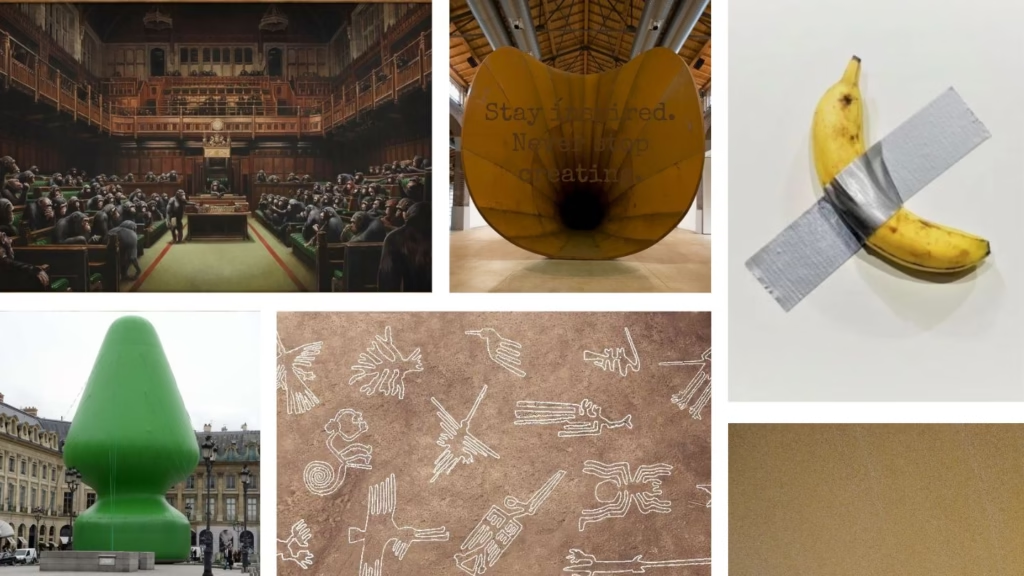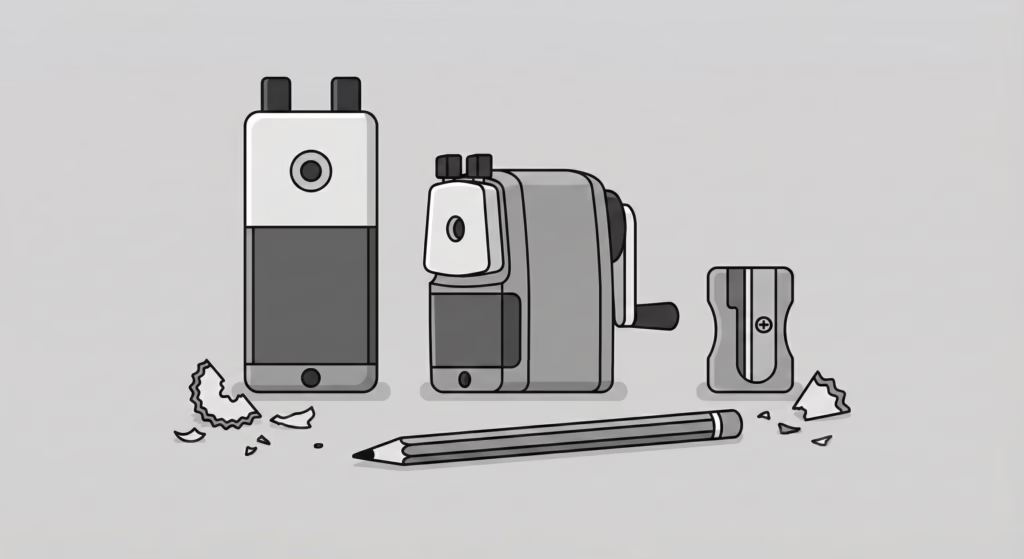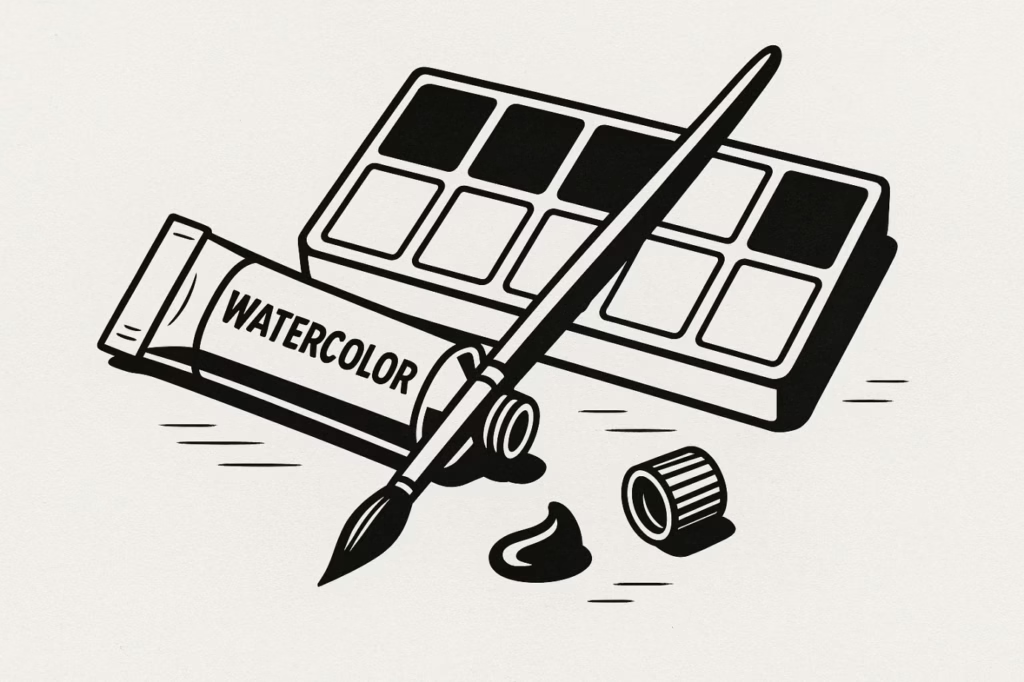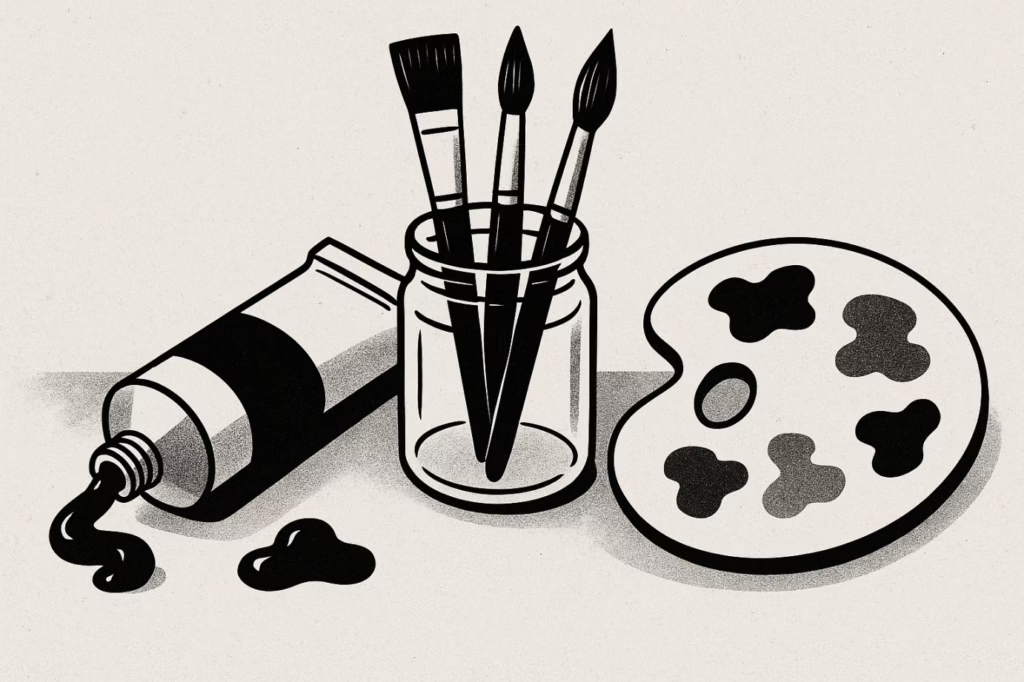Mysterious controversial art installations have the power to captivate and divide audiences like no other art form. What makes art truly unforgettable? Sometimes it’s not beauty, technical mastery, or even profound meaning. Sometimes, it’s the perfect storm of mystery and outrage that transforms a simple installation into a cultural phenomenon that sparks global debates for decades.
When we examine the most mysterious controversial art installations throughout history, we discover artworks that didn’t just push boundaries—they obliterated the line between confusion and outrage.
In our hyperconnected world, where viral controversies bloom and die within days, certain artworks have achieved something remarkable: they’ve remained controversial precisely because they’ve remained mysterious. When Maurizio Cattelan’s banana duct-taped to a wall sold for $6.24 million in 2024, the art world didn’t just debate its value—they questioned reality itself. Was it genius or elaborate prank? The mystery amplified the controversy, and the controversy deepened the mystery.
Today, we examine seven art installations that didn’t just push boundaries—they obliterated the line between confusion and outrage, creating cultural touchstones that continue to divide audiences worldwide. These aren’t just controversial artworks; they’re enigmas wrapped in scandals, mysteries that became more famous for what people couldn’t understand than for what they could see.
The Psychology Behind Mysterious Controversy
Why do mysterious artworks spark more intense controversy than explicitly provocative ones? The answer lies in human psychology and our relationship with public space. When we encounter art in museums, we accept ambiguity as part of the experience. But when that same ambiguity appears in public spaces—especially those funded by taxpayers—something fascinating happens. As research from the National Endowment for the Arts shows, public art generates more intense reactions than gallery-based works.
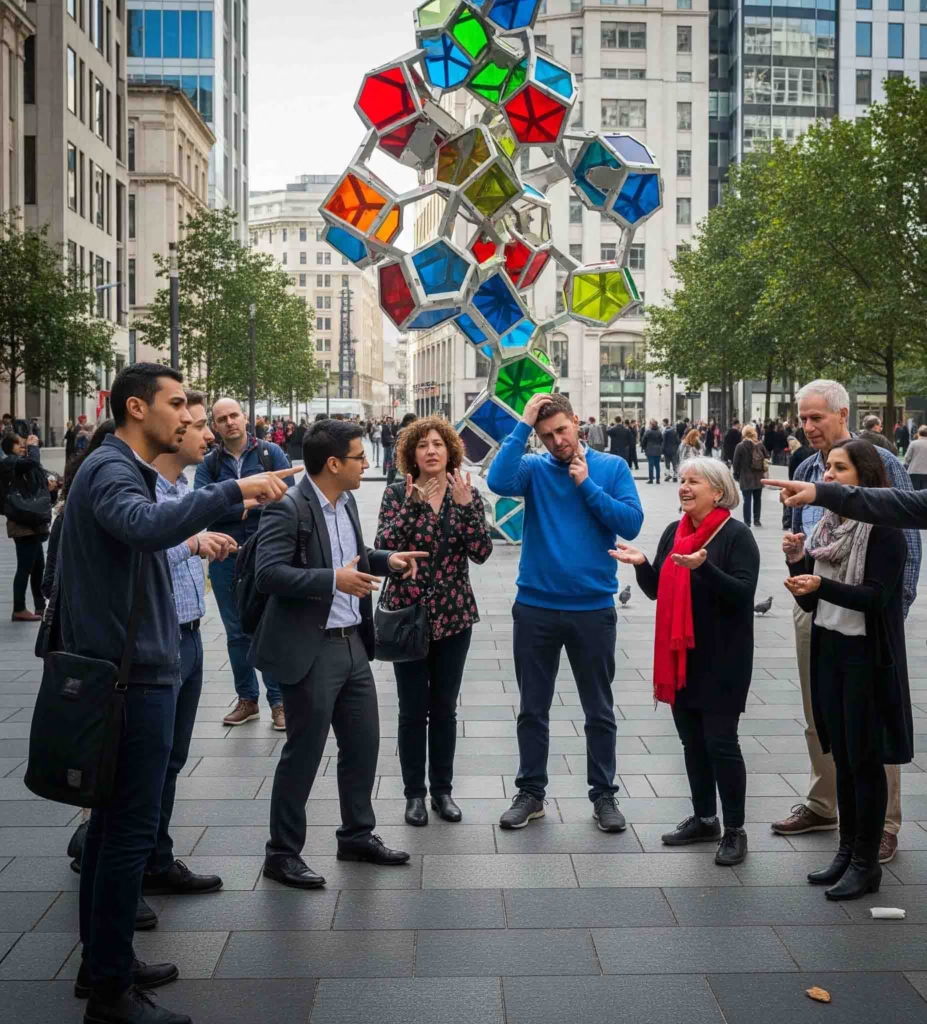
Installation art was designed to “democratize the art experience” and give viewers “a more active role in the consumption of the artwork”, but this democratization comes with a price. According to MoMA’s definition of installation art, the public feels ownership over public art, and ownership demands understanding. When an installation refuses to explain itself, it creates an interpretive vacuum that fills with projection, frustration, and ultimately, controversy.
The digital age has supercharged this phenomenon. Social media amplifies confusion into outrage, turns questions into accusations, and transforms artistic ambiguity into viral debates. A mysterious installation isn’t just puzzling anymore—it’s content. The more inexplicable the artwork, the more shareable the controversy becomes.
This psychological tension explains why some of history’s most controversial installations aren’t the most explicitly shocking ones, but the most mysteriously ambiguous. Let’s explore the masterpieces of confusion that have achieved this rare status.
The 7 Most Mysterious Controversial Art Installations
1. Richard Serra’s “Tilted Arc” (1981-1989) – The Vanished Giant
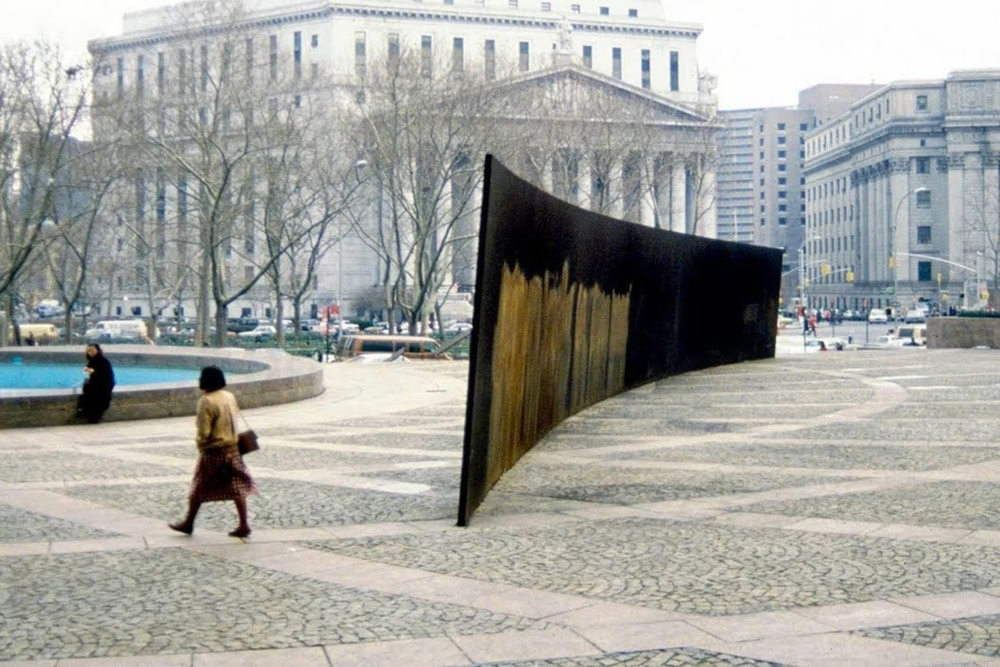
Richard Serra’s “Tilted Arc” was “a 120-foot-long, 12-foot-high curved wall of raw steel that sliced across the plaza, physically and visually interrupting the public space” in New York’s Federal Plaza. You can learn more about Serra’s other works at the Guggenheim’s comprehensive collection. But what makes this installation uniquely mysterious isn’t what it was—it’s what it became when it was destroyed.
The Mystery: Serra insisted the work was “site-specific” and would be destroyed if moved anywhere else. When over 1,300 federal employees signed a petition for its removal, Serra’s response was uncompromising: the artwork would rather die than relocate. But why? What made this particular arrangement of steel and space so irreplaceable that its creator preferred its destruction to its preservation?
The Controversy: Workers complained it obstructed their daily routines, attracted graffiti, and created an oppressive atmosphere. Serra’s response was defiant: “I don’t think it is the function of art to be pleasing. Art is not democratic. It is not for the people.” This statement only intensified public anger.
The Deeper Question: Was Serra’s real artwork the controversy itself? By creating something so site-specific that it would choose death over compromise, did he actually create a performance piece about the relationship between art, space, and public will?
Current Status: The sculpture was removed in 1989, but its absence has become more famous than its presence ever was. The empty space it once occupied continues to generate debate 35 years later. The mystery has outlived the artwork.
2. Anish Kapoor’s “Dirty Corner” (2015) – The Versailles Scandal
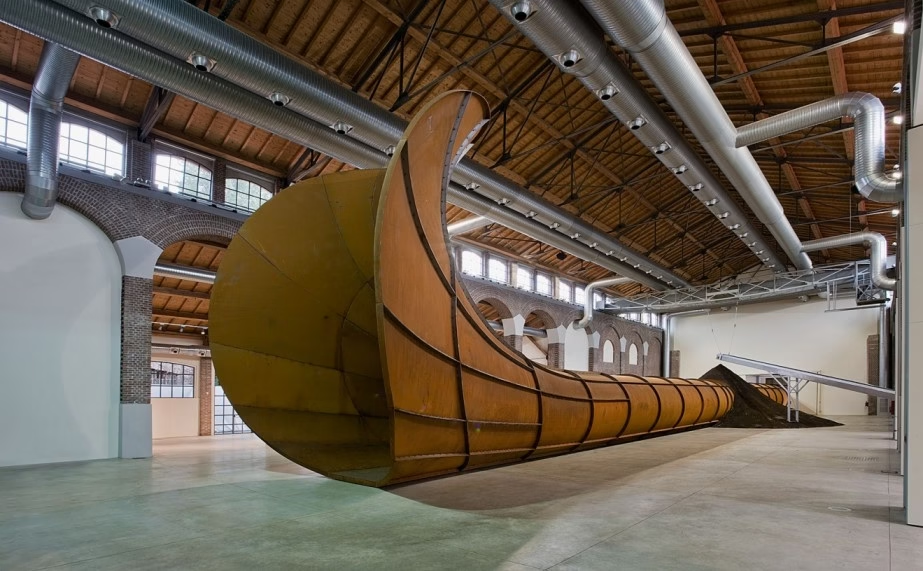
Source: Anish Kapoor
When Anish Kapoor installed his Cor-Ten steel sculpture in the gardens of Versailles in 2015, it “resembled a cornucopia in Cor-Ten steel, but also a vaginal orifice when seen straight on”. The Château de Versailles official website documents how the ambiguous form sparked immediate controversy, but what happened next transformed artistic ambiguity into cultural warfare. For more context on contemporary art controversies, see our guide to understanding controversial modern art movements.
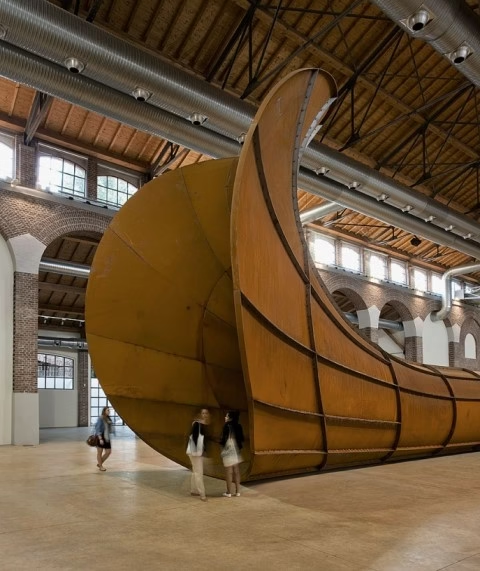
Source: Anish Kapoor
The Mystery: Kapoor denied that the work represented Marie Antoinette’s anatomy, despite critics’ claims. But his denials only deepened the mystery. If it wasn’t intentional, why did this particular form appear at this particular palace? Was the resemblance truly accidental, or was Kapoor playing a more sophisticated game?
The Controversy: The piece was vandalized twice: “once with splashed paint, which Kapoor removed, and then with antisemitic graffiti (Kapoor’s mother is Jewish), which he left in place”. A right-wing politician filed a complaint against Kapoor for promoting hate by preserving the antisemitic messages.
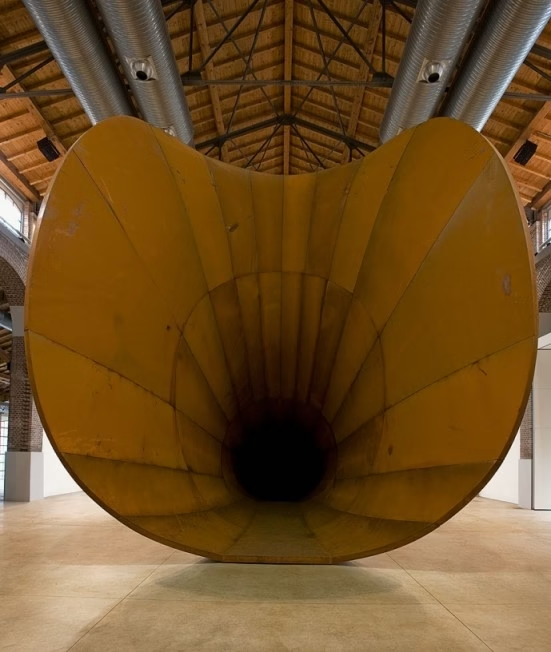
Source: Anish Kapoor
The Deeper Question: By preserving the hate speech while removing the paint, was Kapoor making a statement about different types of violation? Did the graffiti become part of the artwork, or was the artwork’s meaning fundamentally changed by it?
Current Status: The installation’s meaning remains contested. The preserved graffiti adds layers of interpretation that Kapoor never intended—or did he anticipate this outcome? The mystery compounds with each new interpretation.
3. Maurizio Cattelan’s “Comedian” (2019) – The $6.2 Million Question
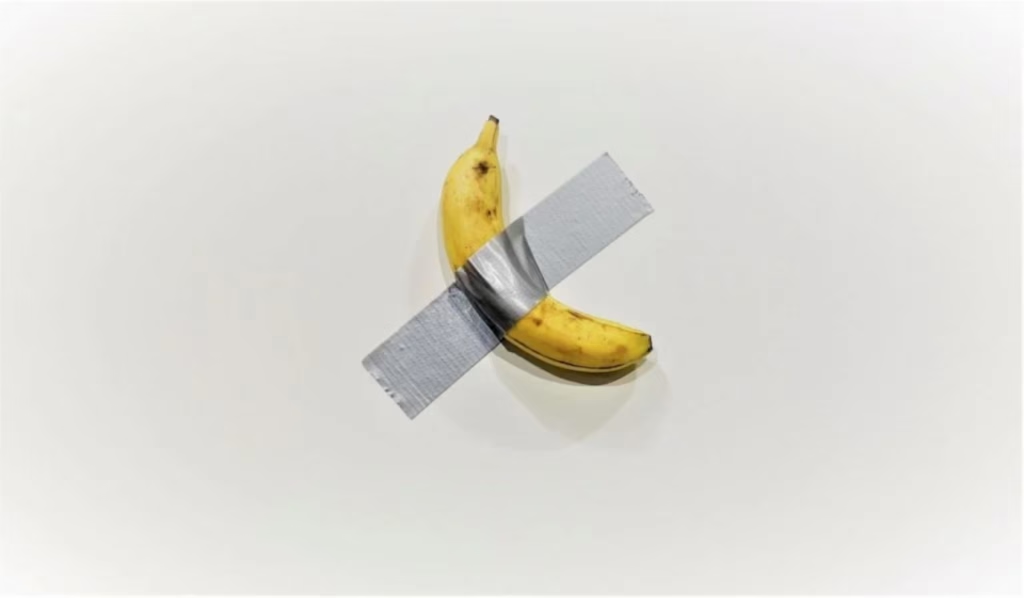
Maurizio Cattelan’s Comedian, for sale from Perrotin at Art Basel Miami Beach. Photo by Sarah Cascone.
Italian provocateur Maurizio Cattelan created what appeared to be “a banana stuck to a wall with grey adhesive tape”, but when it sold for $6.24 million at Art Basel Miami Beach, it became something else entirely: a mirror reflecting our relationship with value, meaning, and art itself. This connects to broader questions about art market valuation and contemporary collecting practices.
The Mystery: The work “appears to be a banana stuck to a wall with grey adhesive tape” but “is accompanied by a certificate of authenticity and specific instructions for its installation”. Is the banana the artwork, or is the concept the artwork? When the banana rots and is replaced, is it still the same piece?
The Controversy: The piece was eaten twice during exhibitions—once by a hungry performance artist, once by a visitor who called it “delicious.” Each consumption sparked new debates: Was eating the artwork vandalism or participation? Did the consumption complete the piece or destroy it?
The Deeper Question: Some critics see the work “as a reflection on the value of art and the notion of ephemerality, while others criticized it as an example of contemporary art that has become excessively commercialized and focused on sensationalism”. But what if the mystery itself is the point? What if Cattelan created a perfect Rorschach test for the art world’s anxieties?
Current Status: Multiple editions exist, each raising new questions about originality and value. The mystery hasn’t been solved—it’s been replicated and sold.
4. Ai Weiwei’s “Dropping a Han Dynasty Urn” (1995) – The Destructive Paradox
Source : Youtube @learnchinesenow
Chinese artist Ai Weiwei photographed himself deliberately dropping what appeared to be a 2,000-year-old Han Dynasty urn, capturing the moment of destruction in three sequential images. But was it really ancient, or an elaborate performance with a replica?
The Mystery: Ai Weiwei has never definitively confirmed whether the urn was authentic or a reproduction. This ambiguity is crucial—if it was real, the work becomes a statement about destroying the past to create new meaning. If it was fake, it becomes a meditation on authenticity itself.
The Controversy: Critics accused him of cultural vandalism, destroying irreplaceable heritage for artistic shock value. Others argued that questioning the destruction of cultural artifacts by political systems was more important than preserving any individual object.
The Deeper Question: Does it matter if the urn was real? The photograph exists regardless. The gesture exists regardless. Perhaps the mystery of authenticity is itself the artwork’s central meaning—a reflection on how we value objects, history, and artistic intent.
Current Status: The truth remains deliberately unclear. Ai Weiwei continues to create works that question authority, authenticity, and cultural preservation, but this early piece established his mastery of productive ambiguity.
5. Paul McCarthy’s “Tree” (2014) – The Parisian Plug
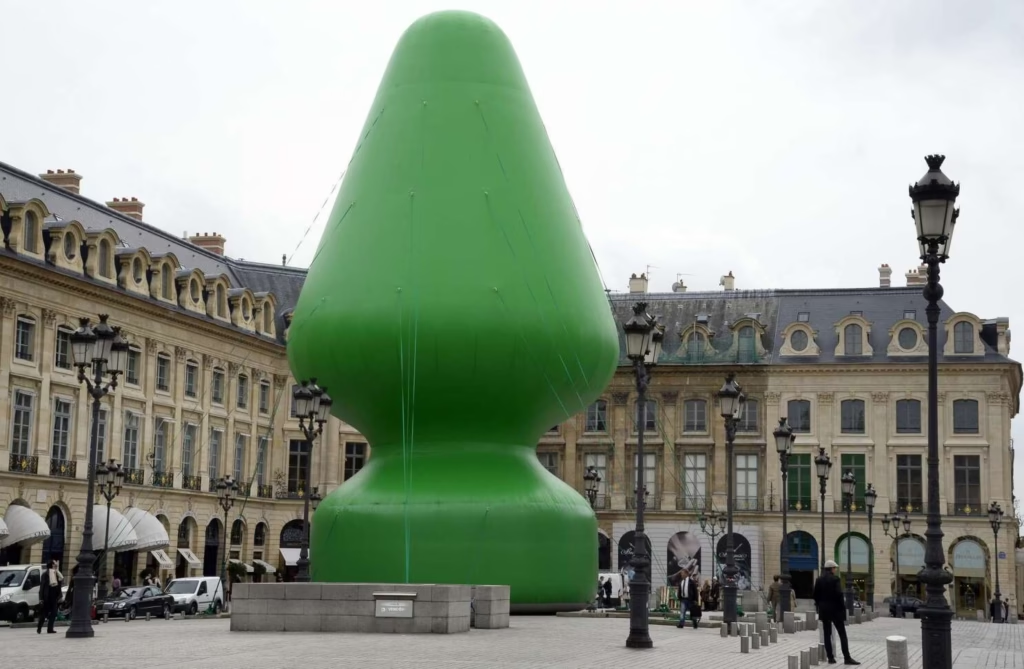
Source: Los Angeles Times
Paul McCarthy’s inflatable “Tree” installation in Paris was “vandalized within 48 hours” and the artist was “assaulted while trying to inflate it”. But was the public response to a Christmas tree, or to something else entirely?
The Mystery: McCarthy insisted he created a Christmas tree, but the green inflatable structure’s resemblance to a sex toy was undeniable. Was this resemblance intentional provocation, artistic accident, or cultural projection? McCarthy’s denials only intensified speculation.
The Controversy: The piece was “vandalized by a man who climbed the fencing around the sculpture and cut the power supply that kept the piece inflated, as well as the structural support cords”. The destruction happened so quickly it seemed almost choreographed.
The Deeper Question: In an age where every form can be interpreted sexually, can any phallic or vaginal shape claim innocence? Was McCarthy naive about his form’s implications, or was he creating a trap for cultural interpreters?
Current Status: McCarthy “did not want the work repaired or replaced but he exhibited Tree again in 2016 at Paramount Ranch where visitors ‘reveled in its absurdist glory'”. The mystery of intent persists, but perhaps that’s the point.
6. The Nazca Lines (500 BC – 500 AD) – Ancient Land Art
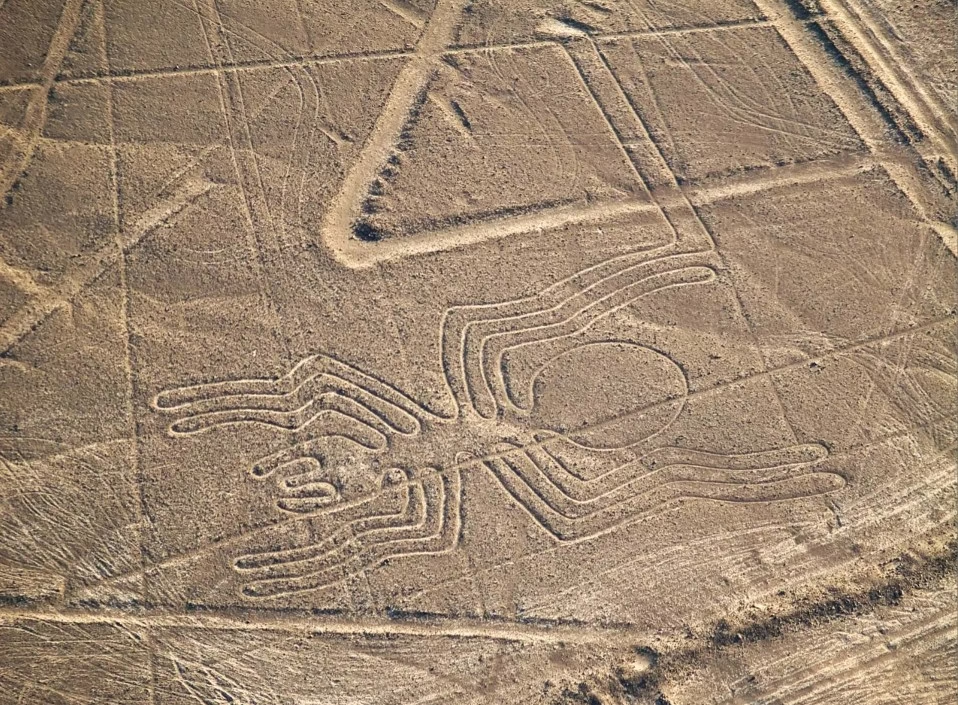
Source: Britanica
These “giant geoglyphs that are seemingly carved into the earth itself” in southern Peru represent “llamas, monkeys, spiders, and fish” created by “turning over the red, oxidized rocks of the pampas to reveal the lighter ground beneath them”. UNESCO’s World Heritage documentation provides official recognition of their cultural importance. But their purpose remains one of archaeology’s greatest mysteries. For more ancient mysteries in art, explore our coverage of prehistoric art and symbolism.
The Mystery: The lines include “more than 800 straight lines, 300 geometric shapes, and 70 renderings of animals and plants geoglyphs” but “anthropologists are still to find out why they were created”. Were they astronomical calendars, religious rituals, or something else entirely?
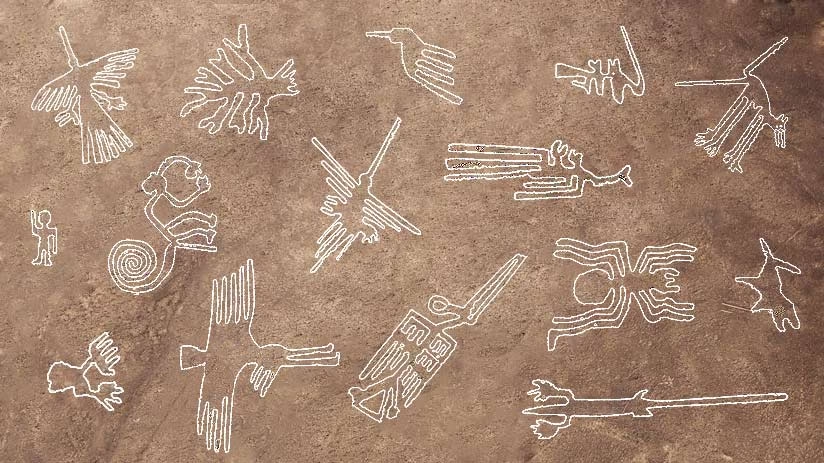
Source: https://www.machutravelperu.com/
The Controversy: Modern theories range from the scientific (astronomical alignments) to the sensational (ancient alien landing strips). Their “enormity and exactitude, as well as the fact that they are designed to be viewed from directly above, have mystified researchers” and spawned countless conspiracy theories.
The Deeper Question: Do these represent humanity’s first land art installation? Created over a thousand years before the term “installation art” existed, they demonstrate the same impulse to transform landscape into meaning that drives contemporary artists.
Current Status: UNESCO protected but theoretically infinite. New discoveries continue, each adding to the mystery rather than solving it. The lines remain active artworks, generating new interpretations with each generation.
7. Banksy’s “Devolved Parliament” (2009) – The Anonymous Critique
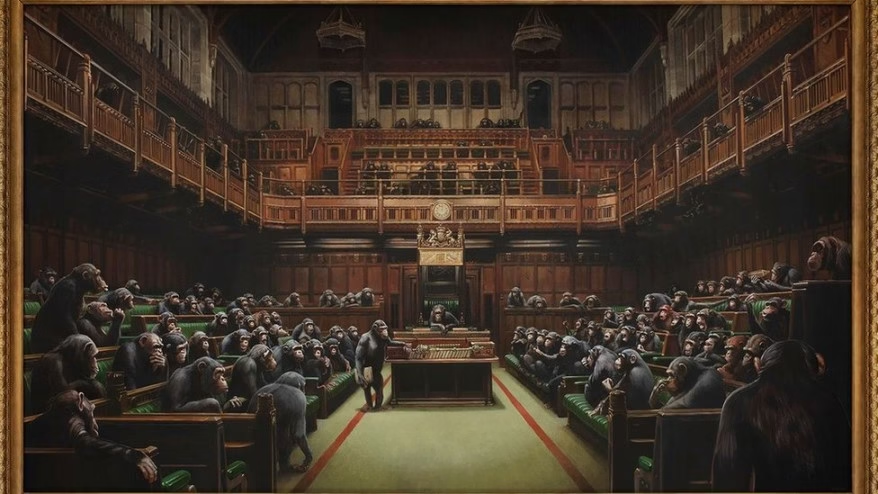
Source: Banksy, Devolved Parliament (2009). Courtesy of the artist.
Banksy, “a prolific street artist since the 90s whose satirical graffiti pops up on walls here and there, mainly in the streets of England,” remains completely anonymous despite global fame. His painting showing the UK Parliament populated entirely by chimpanzees sold for £9.9 million according to Sotheby’s auction records, but the artist’s identity remains unknown. This connects to broader questions about anonymity in contemporary art.
The Mystery: Who is Banksy, and why maintain anonymity despite massive commercial success? “Speculators think Banksy is most likely British, or at least live in Britain because most of their works are there, but other than that, little is known about this artist”.
The Controversy: Critics debate whether anonymous art can be truly legitimate. If we don’t know who created it, how do we evaluate intent, authenticity, or artistic development? Others argue that anonymity makes the work more pure, freed from biography and personality cult.
The Deeper Question: “Many more – especially fans of Banksy – believe that their identity should remain unknown, not only to add to their intrigue but also to protect them, as some of their more politically-inclined art could get them in trouble”. In an age of total surveillance and social media transparency, is anonymity itself the most radical artistic statement?
Current Status: The mystery intensifies with each new piece. Every Banksy work becomes a clue in an ongoing puzzle that may never be solved—and perhaps shouldn’t be.
Why Mystery Amplifies Controversy in Mysterious Controversial Art Installations
The installations above share a crucial characteristic: their ambiguity isn’t a flaw—it’s their most powerful feature. When mysterious controversial art installations refuse to explain themselves clearly, they force viewers to become active participants in meaning-making. This participation is uncomfortable, especially in public spaces where we expect clarity and consensus.
Installation art “enables the viewer to have a more active role in the consumption of the artwork, rather than passively viewing it. As such, the meaning of the artwork was no longer just about what the artist wanted to express, but about the viewer’s experience of and interaction with it”. This democratization of interpretation sounds positive in theory, but in practice, it creates chaos.
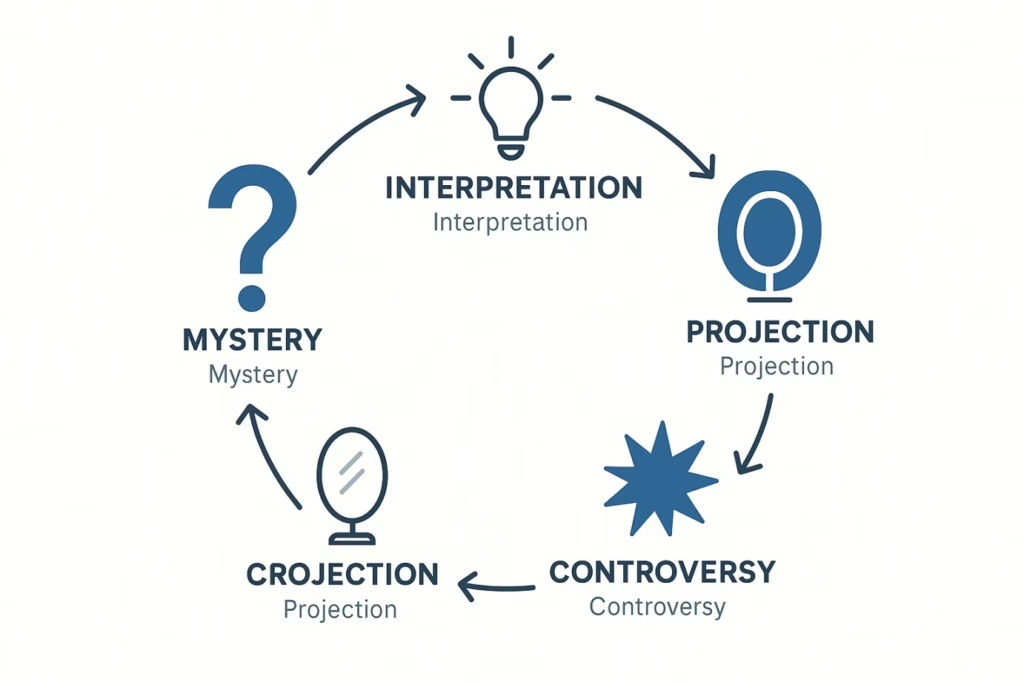
When thousands of people encounter the same mysterious installation, they don’t reach the same conclusion—they project their own fears, desires, and cultural assumptions onto the work. A steel wall becomes a barrier or a protection. A curved form becomes sexual or spiritual. A banana becomes a joke or a manifesto.
Social media accelerates and amplifies these projections. Each interpretation becomes a position to defend, each question becomes a battle line. The artwork disappears beneath layers of cultural interpretation, but paradoxically, this disappearance makes it more famous, not less.
The mystery doesn’t diminish the controversy—it sustains it. Clear meanings can be debated and resolved, but mysterious meanings generate infinite discussion. The installations that achieve legendary status aren’t the ones that shocked people once, but the ones that continue puzzling them decades later.
The Future of Mysterious Controversial Art Installations
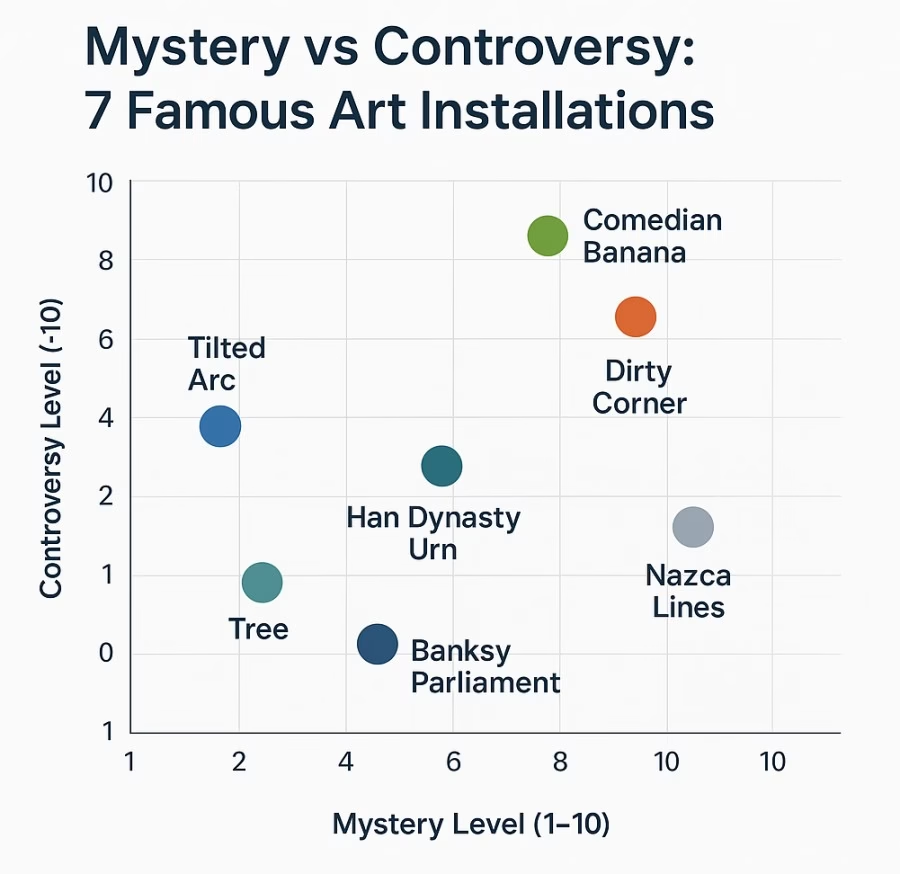
As we move deeper into the digital age, the relationship between mystery and controversy in public art is evolving. Interactive installations can respond to viewers, potentially reducing ambiguity through adaptive explanation. But they can also create new forms of mystery by behaving differently for different people.
Virtual and augmented reality installations can exist in multiple states simultaneously, being one thing for some viewers and something completely different for others. The potential for mystery multiplies when the artwork itself can change based on who’s looking at it.
However, this technological evolution might make traditional mysterious installations even more precious. In a world where everything can be explained, googled, or decoded, artworks that maintain their secrets become increasingly rare and valuable.
The installations we’ve examined suggest that mystery isn’t a problem to be solved—it’s a feature to be preserved. The most successful controversial artworks aren’t the ones that clearly communicate their intentions, but the ones that successfully resist interpretation while inviting it.
Future mysterious installations will likely need to be even more sophisticated in their ambiguity. As audiences become more media-literate and interpretation-savvy, creating genuinely puzzling art becomes more challenging. The bar for meaningful mystery keeps rising.
The Verdict: When Questions Become Art
After examining these seven installations, a pattern emerges: the most mysteriously controversial artworks are the ones that transform viewers from passive observers into active detectives. They don’t just display meaning—they hide it, complicate it, or question whether it exists at all.
Which installation do YOU find most mysteriously controversial?
- Tilted Arc (The vanished giant that became more famous after destruction)
- Dirty Corner (The ambiguous form that sparked cultural warfare)
- Comedian (The $6M banana that questions art’s value)
- Dropping a Han Dynasty Urn (The destruction that might be fake)
- Tree (The Christmas tree that wasn’t)
- Nazca Lines (Ancient mysteries still unsolved)
- Banksy’s Parliament (Anonymous art questioning democracy)
The power of these installations lies not in their answers, but in their questions. They’ve achieved something remarkable in our age of instant information: they’ve remained unknown. In a world that explains everything, they’ve preserved mystery. In a culture that demands clarity, they’ve maintained ambiguity.
Perhaps that’s the deepest mystery of all—not what these installations mean, but why we need them to mean something. In our rush to solve artistic puzzles, we might be missing their most important message: some questions are more valuable than their answers.
The most mysterious controversial art installations don’t just occupy physical space—they occupy mental space, continuing to puzzle and provoke long after we’ve walked away from them. In the end, maybe that’s not a bug in the system of public art—maybe it’s the most important feature of all.
What do you think? Share your interpretation of these mysterious installations in the comments below. After all, the mystery continues only as long as we keep questioning.

